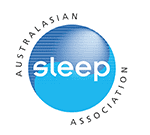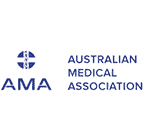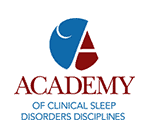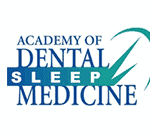Rapid eye movement or REM is an essential part of the sleep cycle. However, you need to look out for REM sleep behavior disorders as soon as it poses a danger to the patient, their sleeping partner, or others they encounter (the symptoms can often be quite violent).
What is REM Sleep Behavior Disorder?
REM refers to Rapid Eye Movement, which is a type of sleep behavior disorder in which you act on your dreams during sleep. Because these dreams become so vivid in the mind of the individual, they react to what’s happening in the dream in the physical state. The reaction typically involves movements, but it is not to be confused with sleepwalking or night terrors. Unlike the latter, most people can remember what their dream is about upon waking.
REM Sleep Behavior Disorder affects only one percent of the population (according to data from the National Sleep Foundation). Earlier studies about this condition indicate that it affects mostly men, but new data suggests it can affect both men and women equally.
When a person enters the REM state, they also experience temporary muscle paralysis. During this stage, the brain exhibits functions that are similar to the waking state, even though the person is asleep. Thus, your body might be lying still, as though you are in deep sleep, while your brain is highly active. According to studies, most of the REM stage happens during the second half of a person’s sleep.
It typically occurs with other symptoms of sleep behavior disorders, which is part of the reason why it is difficult to diagnose. It can even be an indicator of other more complex health concerns such as neurodegenerative disease.
Symptoms of REM Sleep Behavior Disorder
In order to properly diagnose and distinguish it from other sleep disorders, it is important to know the common symptoms of REM Sleep Behavior Disorder. A person who is experiencing REM can manifest any of the following symptoms:
- Movements of the limbs (while asleep)
- Pronounced body movements such as punching, kicking, grabbing, or flailing
- Vocalizations such as talking or yelling
- The ability to recall your dreams upon waking
If you are sleeping next to someone, they might be able to tell you if you exhibit any of these symptoms during your sleep.
What Are the Risk Factors?
It has been established that both men and women may develop symptoms of REM Sleep Behavior Disorder. However, there are certain risk factors that make some people more prone than others.
For instance, those with existing neurological disorders are at a high risk of developing this disorder. This explains why people who suffer from RBD might develop Parkinson’s Disease at a later point in their life.
Age is another risk factor in developing REM Sleep Behavior Disorder. It is common among those who are above the age of 50, especially men.
What Causes It?
Despite there having been a lot of studies made on this subject, it remains unclear as to what exactly is the cause behind REM Sleep Behavior Disorder. It is commonly seen in people who withdraw from certain drugs or those who take particular medications (such as antidepressants). However, there is no strong link yet that would point to any of these as potential causes of this type of sleep disorder.
There are also a few studies that suggest that post-traumatic stress disorder (PTSD) patients are prone to having this condition. This is also supported by the fact that people who recently experienced trauma have encountered these symptoms. However, a more conclusive study has yet to be done.
Diagnosis Procedure
The most common way to diagnose REM is in a dedicated sleep center. Under a controlled environment, the patient is asked to sleep in the sleep clinic for a night so they can be observed by a sleep doctor and technician during sleep. This is also a common approach used to diagnose sleep apnea.
The medical team will monitor the vital signs of the patient such as heart rate and breathing. They will also be keeping a close eye on muscle movement and brain activity. Depending on what data the team is able to gather through the night, they will be able to conclude if a person has REM or is diagnosed with some other type of sleep disorder.
Can You Treat REM Sleep Behavior Disorder?
Yes, this condition can be managed with the help of medications. Clonazepam is the most common type of medication prescribed for those who have this condition. In some cases, you might even be required to intake melatonin as a type of dietary supplement. This supplement is designed to manage symptoms but is not yet proven to treat the cause of the sleep disorder.
The long-term outlook for patients suffering from REM Sleep Behavior Disorder is positive though. It can be treated successfully with medication, however, you can expect some side effects when you take drugs to manage your condition. In some cases, medication can even worsen sleep apnea. It is best to talk to your doctor about these side effects so they can recommend something that would be more effective without the side effects.
Potential Complications from REM Sleep Behavior Disorder
Episodes of REM Sleep Disorder Behavior are something that you need to take seriously. If you, or if you know anyone who exhibits the above-mentioned symptoms, it is best to consult a professional right away. The symptoms can worsen over time, and it is only a matter of time before you may become a hazard to someone else.
Aside from the risk of injury, there are several potential complications that could develop from REM. People who are diagnosed with it could develop a wide range of cognitive, neurological, and emotional problems later on in life. They might struggle with anxiety, apathy, cognitive problems, and an inability to function normally. Parkinson’s disease is also a common complication that could arise from this condition.
In addition, you could be at higher risk of developing sleep apnea, narcolepsy, and periodic limb movement disorder. The complications that might arise as a result of this sleep disorder are nothing to be taken lightly. Make sure you address the problem before it gets worse. Consult a sleep physician so they can recommend the best treatment approach.


























